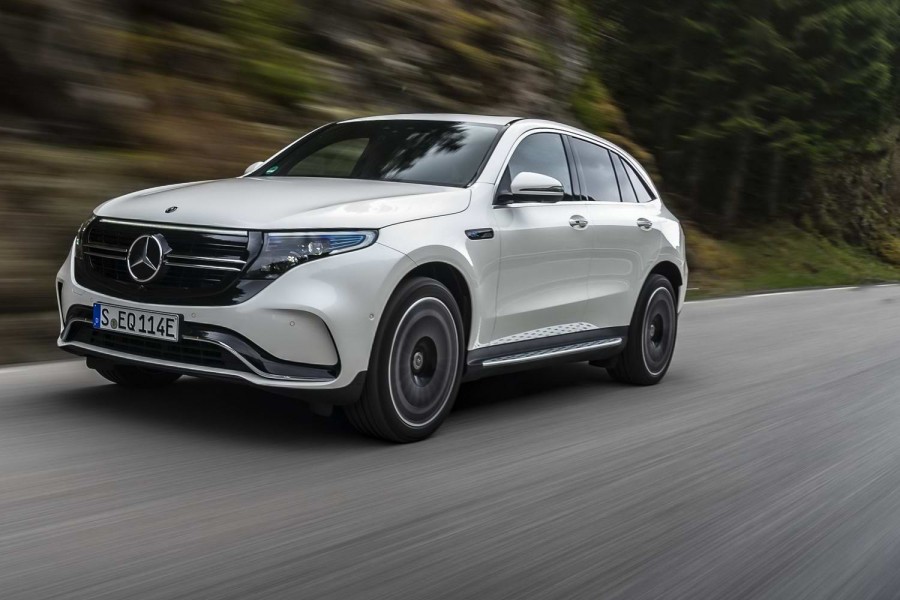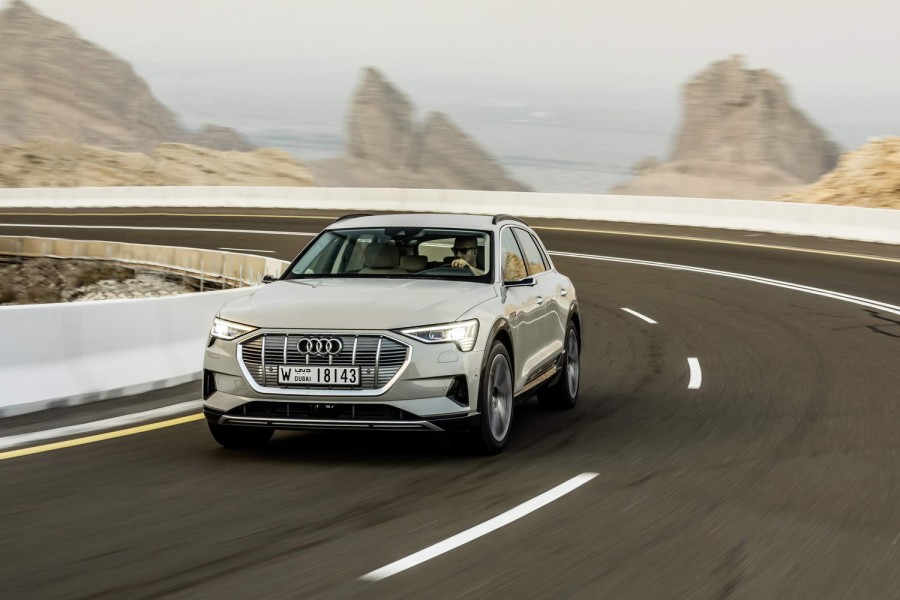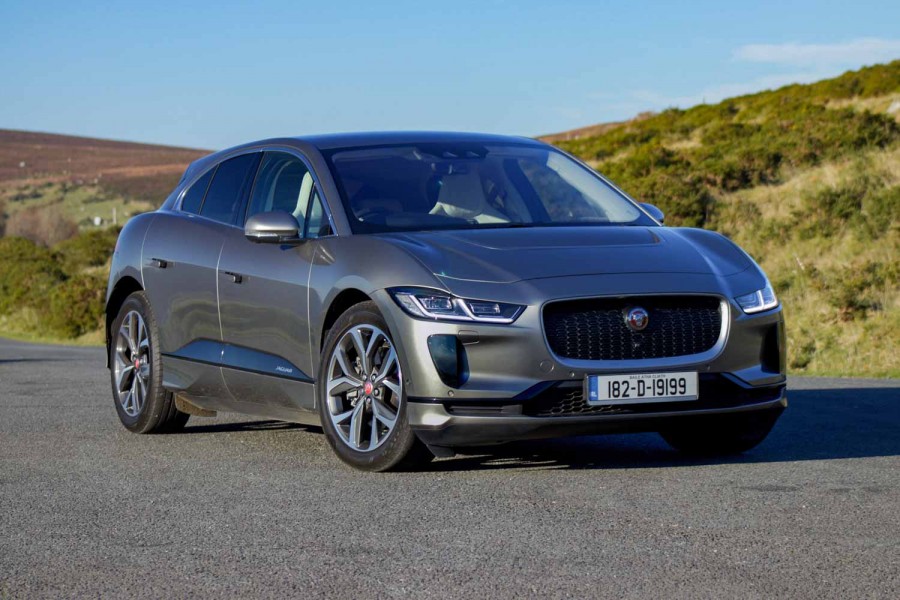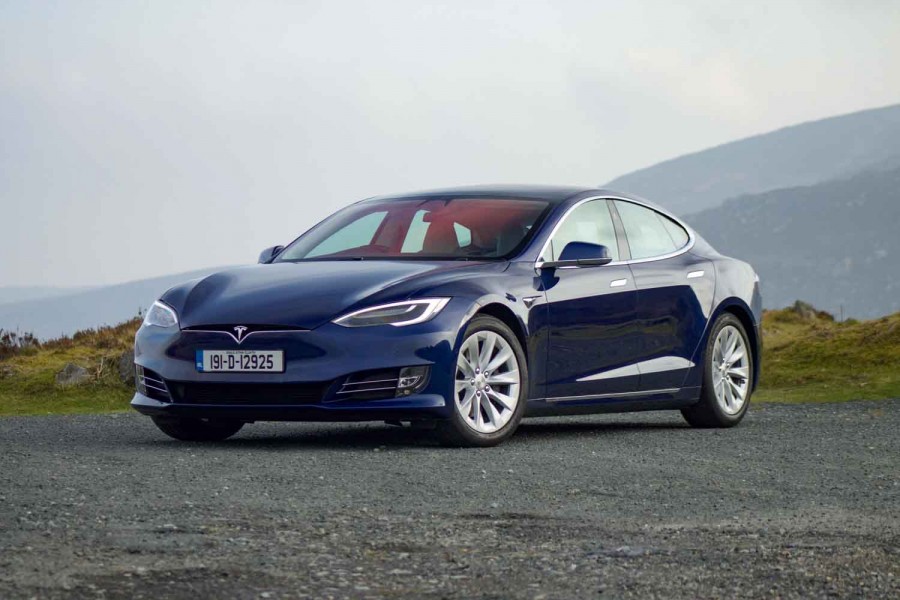The EQC isn't the first electric Mercedes, but it is the first of a new generation of EQ electric cars from the German brand. As the name indicates, it's of similar size to the Mercedes C-Class and GLC, but with a theoretical range of over 400 kilometres and over 400hp on tap, it's priced to compete with the other premium electric SUVs on the market. We've driven a fully-loaded example in the EV capital of the world right now, Oslo in Norway.
In the metal
One glance at the Mercedes EQC is enough to confirm that the aerodynamicists had a large part to play in shaping this EV; it looks smooth and there are no roof rails. That does, perhaps, lend to a little blandness from some angles, but that's recovered somewhat by expressive LED lighting front and rear, plus a distinctive new take on the Mercedes 'grille' featuring a prominent three-pointed star in the middle. That looks quite different in standard and AMG Line specification pictured here. The latter adds running boards, too. There are several cool wheel designs to choose from and even a silky matt-finish paint option if your pockets are deep enough.
In terms of size, the EQC is built on the same wheelbase as the Mercedes GLC and about the same width, though it is over 100mm longer (or 30mm longer than the GLC Coupe). The lithium-ion battery pack (made up of 384 individual cells) sits low down between the axles and weighs a significant 652kg, contributing to a quoted kerb weight of 2,495kg. The GLC 220 d 4Matic AMG Line, by comparison, is 1,845kg.
Best to think of the EQC as comparable in interior space to the GLC Coupe, which means it's adequately accommodating rather than hugely spacious. The door apertures seem quite small, for example, though there's loads of adjustment in the front seats and steering wheel for getting comfortable. At 500 litres, the high-set boot isn't awfully smaller than the GLC's (550 litres), and in fact is identical to that of the GLC Coupe, but the EQC's only accommodates 1,060 litres when its split-folding rear seats are down. The Audi e-tron and Jaguar I-Pace have much larger boots.
No doubt most will be distracted by the excellent MBUX digital dashboard (which has plenty of new EQ-only toys and menus to find your way around) and while the centre console could have come from any current Mercedes, we like how the designers have created such a unique looking wraparound fascia. It's also remarkably tactile.
Driving it
As Mercedes isn't first to market with a high-powered all-wheel-drive SUV, it's easy to be blasé about the EQC's technical make-up and its abilities. By any measure, this is an impressive car that will undoubtedly blow Mercedes buyers away on first experiencing it. On each axle is an asynchronous electric motor/generator that endows the EQC with four-wheel drive. The system actively varies the amount of torque each set of wheels gets to manage traction and, when desired, to give the car a sportier rear-drive feel. In total, there's up to 408hp and 760Nm of torque available, which explains how the EQC scarpers away from a standstill to 100km/h in just 5.1 seconds, despite its considerable weight.
Though the car adapts to driving style to a certain extent in the default Comfort mode, the driver can fully personalise all the sub-systems in the Individual setting, or choose from three pre-sets. It's worth noting that this does not change the passive suspension in any way. In Eco mode, the EQC is optimised for efficiency, while response and dynamism are the car's priorities in the Sport setting. The final drive mode, called Max Range, is self-explanatory, and it actively encourages the person behind the steering wheel to drive in an efficient manner, including the use of a haptic accelerator pedal that 'taps' the driver's sole to suggest easing off.
The driver can further influence the car's efficiency by altering the level of energy recuperation harvested on deceleration. The options include fully automatic (which we found to feel a little odd, as it's inconsistent - even if it is theoretically the most efficient mode) and D + for coasting with no recuperation. Between those are low, medium and high levels and the latter, called D --, enables one-pedal driving in most situations, as there's so much braking power when you leave off the accelerator. In stop-start and slow-moving traffic, we decided that medium rather than high levels of recuperation felt more natural, enabling smoother progress, though an owner may well adapt to the higher level over time. It's good to have the option to change it.
Naturally, the electric powertrain is smooth and quiet in operation, which presented Mercedes with a challenge in terms of quietening the rest of the car. Hence, a lot of focus was put on the aerodynamics, making the EQC as slippery through the air as possible. It creates considerably less drag than the Mercedes GLC, for example. On top of that, there are double-glazed front side windows as standard. The result is a serene and quiet cabin that feels wonderfully isolated from the outside world.
That luxurious ambience is reflected in how the EQC drives. It's highly competent in terms of mechanical grip, traction and excellent body control, and the steering is well-weighted and responsive, but this is not a sporty-to-drive SUV - regardless of its accelerative abilities. In fact, the suspension is based on that of the Mercedes E-Class All-Terrain, which uses self-levelling air suspension on the rear. That's no bad thing of course, as instead the focus is on refinement, civility and comfort.
What you get for your money
The Mercedes-Benz EQC is priced from €89,450 before the SEAI grant and VRT rebate are taken into consideration. That means it undercuts the likes of the Audi e-tron and Jaguar I-Pace when all are specified to the same standard. EQC buyers can upgrade to the AMG exterior design package for a further €2,447, bringing the price up to €91,897. To upgrade the interior to the Electric Art standard and keeping the AMG exterior brings the price to €92,713, while the full AMG exterior and interior specification will cost €93,546.
In terms of efficiency and range, the EQC has a theoretical range of as much as 417 kilometres on the WLTP standard. In our relatively short test, which was conducted on free-flowing roads for the most part with an 80km/h limit, we saw an indicated range of under 400 kilometres, though the car was not fully charged to begin with so we'll reserve judgement until we have a chance to do a longer test drive on Irish roads.
Charging times will vary massively depending on the source, but Mercedes gave a couple of examples to consider. To charge up in full from 10 per cent remaining, it would take 11 hours using a Wallbox or public charging station supplying at least 7.4kW and 16A per phase. A DC fast-charger with a supply voltage of 400V and 'at least' 300A, in the meantime, can charge the battery from 10 per cent to 80 per cent in a claimed 40 minutes.
Key to the ownership experience of the EQC will be the latest Mercedes me smartphone app. The car is at its most efficient when travelling on planned routes, which the app can proscribe according to charging stops required and the departure time. It's also possible to set a desired cabin temperature for that time.
Summary
The Mercedes EQC is a worthy new addition to the growing ranks of premium electric SUVs on the market, though like them all, its high price will mean take-up by the wealthy few. Still, it makes a viable alternative to a petrol or diesel-powered high-end Mercedes and it's a good car in all other aspects. We're looking forward to seeing more from the Mercedes EQ brand.







































